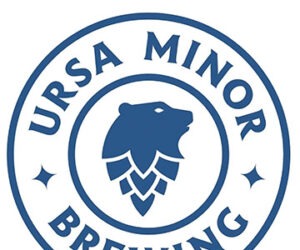Deviant Wolfe Brewing Co.
Dear Replicator, I recently got to visit Deviant Wolfe Brewing in Florida and loved their kveik IPA, Norwegian Wizard Crisis. I’m always curious to learn more about brewing with kveik yeast!
David Tillman
Atlanta, Georgia

Many brewers in the world of craft beer come from unique and disparate backgrounds — indeed, one might well argue that much of the strength of the industry is derived from just how many varied skillsets can ultimately contribute to the creation of beer. For Matt Rolfe, Head Brewer of Deviant Wolfe, that old career was computer engineering. The skills he brought from that job turned out to impart a heightened analytical mindset — an approach that certainly comes in handy when it comes to brewing beer at a commercial scale.
“The engineering approach translates well into recipe creation and process creation for brewing,” Rolfe says. “Controlled experiments and single variable testing are kind of built into my approach for everything.”
Located in the heart of downtown Sanford, Florida, Deviant Wolfe was founded in 2018, and everything from old careers, to music preferences, to the hot and humid weather of Florida has contributed to the brewery’s identity over the years.
The name Deviant Wolfe — which derives from a combination of the founders’ last names (Wolverton and Rolfe) — also holds a few extra meanings for its team. “Deviant,” Rolfe says, speaks to the punk rock mindset that permeates much of craft beer — a desire to do things just a little bit different. For Rolfe, this attitude and name also serves to acknowledge a drastic life change from working a corporate office job.
Like many small businesses, Deviant Wolfe had to get creative in order to adapt to the COVID-19 pandemic. Seeking to shift footing to a more distribution-based model out of necessity, the brewery began leaning on canned offerings.
Rolfe notes that in spite of all this, Deviant Wolfe remains a small operation, which helps to keep the business nimble. The entirety of the brewery as well as the taproom together take up less than 3,000 sq. ft. (280 sq. m)
“Even with the limitations of space, we’ve grown to triple our first year’s production while increasing our cellar capacity by about fifty percent,” Rolfe says. “And we’re planning another 25 percent increase in production over the course of this year.”
Deviant Wolfe’s lineup has grown along with the business. “We started out pretty aggressively making kettle sours, both because we liked them and they do well with Florida’s climate,” Rolfe says. One of the earliest beers that put the brewery on the map for local craft beer fans was a coffee sour blonde called Sourmanjaro, which has since become a taproom staple.
“Over the years, we’ve started moving towards lagers, which is both an in-house preference and a market shift that we’re all excited about,” Rolfe says. “We still brew a full portfolio of beer styles for the taproom, but our distribution is pretty focused on core styles like our hefeweizen, Nefarious Nebulas, and of course Norwegian Wizard Crisis.”
Like the brewery itself, Norwegian Wizard Crisis has evolved over the years. The name has changed — originally called Gandalf the Wheat, the team soon realized that Norwegian Wizard Crisis was a name less likely to involve any legal challenges. “We changed the name to avoid any IP issues and after we read a tongue-in-cheek article about a few countries running low on practicing wizards (hence the wizard crisis),” Rolfe says. “There was even a certification program and placing blame on all the new technology available to the world.” After deciding to change the name, the theme of “Old World wizardry” quickly lent itself to the idea of experimenting with Norwegian kveik strains.
“One of the great things about brewing is being able to continuously learn,” Rolfe says. “There is so much history, science, process, and equipment to learn about and incorporate into your own practices.”
Rolfe dropped the British strain that he had originally used for the beer, tried out the Voss kveik strain, and lowered the pitch rate while tweaking the dry hop timeline.
“Kveik is an aggressive yeast, the lag times are insanely short, and it definitely doesn’t require the typical ale yeast pitch rates,” Rolfe says. “Given the temps it hits during fermentation, we don’t do any active fermentation dry hopping. We drop the tank to 55 °F (13 °C) after fermentation has reached terminal, before dry hopping. I definitely suggest finding your own preferred dry hop temperature, but we didn’t enjoy the aromatics we got from the hotter 80+ °F (27+ °C) dry hopping on the early batches.”
Rolfe also recommends brewers experimenting with kveik strains play around with lower pitch rates. “We’ve repitched, by weight, at a 50% rate for multiple generations with zero issue.”
Rolfe pitches the yeast around 70 °F (21 °C) and sets the tank to 85 °F (29 °C), though he believes going higher would be fine too. “One of the more fun aspects of this yeast is letting it go at higher temps,” he says. “It flies in the face of so many years of homebrew doctrine and helps reinforce the idea that we’re never done learning new techniques and processes. We use the Voss strain to complement the Cascade and Citra®, but they aren’t the only hops that work. Play around with your favorites and try the other kveik strains if they are available to you. They are all so unique and can make for all kinds of fun combinations.”
Deviant Wolfe Brewing Co.’s Norwegian Wizard Crisis clone

(5 gallons/19 L, all-grain)
OG = 1.056 FG = 1.011
IBU = 30 SRM = 5 ABV = 6%
This hazy IPA is a staple in Deviant Wolfe’s lineup that relies on kveik yeast for a quick, warm fermentation. There are significant hops additions, all of which come post-boil.
Ingredients
7 lbs. (3.2 kg) Pilsner malt
2.2 lbs. (1 kg) flaked wheat
2.2 lbs. (1 kg) red wheat malt
2.5 oz. (71 g) Cascade hops (whirlpool)
3 oz. (85 g) Citra® hops (whirlpool)
4 oz. (113 g) Cascade hops (dry hop)
4 oz. (113 g) Citra® hops (dry hop)
Omega Yeast OYL-061 (Voss Kveik), LalBrew Voss, or CellarScience Voss yeast
3⁄4 cup corn sugar (if priming)
Step by Step
With the goal of creating a moderately dextrinous wort, mash in with 3.3 gallons (12.5 L) of 163 °F (73 °C) strike water to achieve a single infusion rest temperature of 152 °F (67 °C). Hold at this temperature for 60 minutes.
Sparge with water at 180 °F (77 °C) to collect about 6 gallons (23 L) of wort. Boil for 60 minutes. When the boil is complete, cool to 170 °F (82 °C) and then add the whirlpool addition hops. Stir the wort vigorously and then cover and let whirlpool for 20 minutes.
Chill wort to around 70 °F (21 °C) and pitch yeast. Allow fermentation to proceed with no temperature control (Deviant Wolfe sets the tank temperature to 85 °F/29 °C, though above or below this is fine with kveik yeast). Following fermentation, dry hop at room temperature or cooler for three days. Rack to a keg and force carbonate or add priming sugar and bottle as usual. Drink fresh.
Deviant Wolfe Brewing Co.’s Norwegian Wizard Crisis clone
(5 gallons/19 L, extract only)
OG = 1.056 FG = 1.011
IBU = 38 SRM = 5 ABV = 6%
Ingredients
5 lbs. (2.3 kg) Pilsner liquid malt extract
2.2 lbs. (1 kg) wheat dried malt extract
2.5 oz. (71 g) Cascade hops (whirlpool)
3 oz. (85 g) Citra® hops (whirlpool)
4 oz. (113 g) Cascade hops (dry hop)
4 oz. (113 g) Citra® hops (dry hop)
Omega Yeast OYL-061 (Voss Kveik), LalBrew Voss, or CellarScience Voss yeast
3⁄4 cup corn sugar (if priming)
Step by Step
Add 6 gallons (23 L) water to your brew kettle and bring to a boil. Remove kettle from heat and carefully stir in the liquid and dried malt extracts until totally dissolved. Return to boil and boil for 30 minutes.
When the boil is complete, cool to 170 °F (82 °C) and then add whirlpool addition hops. Stir the wort vigorously and then cover and let whirlpool for 20 minutes.
Chill wort to 70 °F (21 °C) and pitch yeast. Allow fermentation to proceed with no temperature control (Deviant Wolfe sets the tank temperature to 85 °F/29 °C, though above or below this is fine with
kveik yeast).
Follow the dry hopping and packaging instructions from the all-grain recipe.



